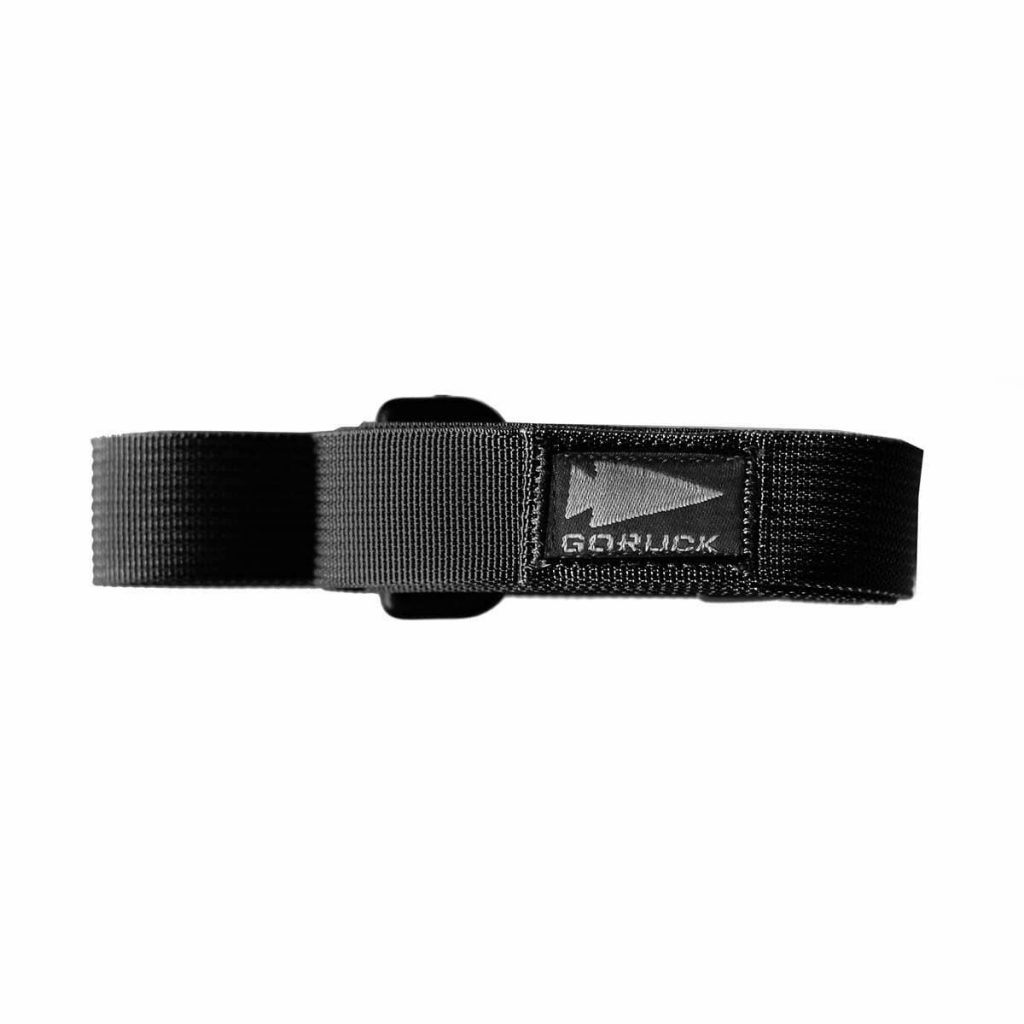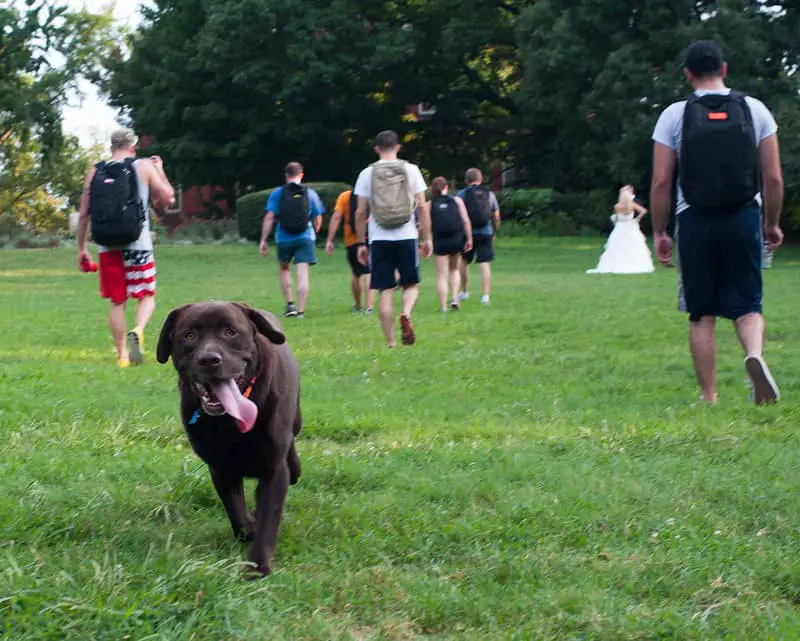
Your dog looks up at you with those sad eyes, begging you for a walk. You were planning to go rucking anyway, so you figured you’d combine the two and ruck with your dog. How do you do this safely?
When rucking your dog, go slowly and make sure you have treats to reward them along the way. They also need water to stay hydrated during rucking and when they get home. If your dog has preexisting health conditions, you may want to reconsider rucking with them.
In this article, we have plenty of helpful, actionable tips for rucking with your dog. By the time you’re done reading, you’ll be ready to introduce your four-legged friend to the wonderful world of rucking!
Want to Ruck Your Dog? Follow These 11 Tips
1. Be Aware of Your Dog’s Preexisting Conditions and Current Health
Before rucking your dog, you need to ensure they’re healthy enough for the activity. If your pup is just a little overweight, getting out and exercising through rucking can be good for them.
However, if they have joint pain or a bad hind leg, rethink rucking. Brachycephalic breeds or those dogs with short noses and obstructed airways probably shouldn’t ruck either.
You also need to know if your dog has preexisting conditions, even those that weren’t previously diagnosed. We recommend an appointment with your dog’s veterinarian for a checkup.
Some canine diseases and conditions that can preclude your dog from rucking include:
- Anemia
- Bronchitis
- Asthma
- Seizure
- Heart murmurs
- Adrenal disease
- Diabetes mellitus
- other metabolic diseases.
If your vet gives your pup the greenlight, then they’re ready to ruck!
2. Bring Treats
Active dogs should love rucking, but what if your canine is a little on the lazier side? They may walk a little and then want to take a break. To inspire them to keep going, you always want to have a bag of treats handy.
We prefer Canine Carry Outs (link to Amazon) since the 50-ounce bag is easily portable.
Simple ingredients make the treats digestible so your dog doesn’t feel backed-up and sluggish while rucking. A few of these beef-flavored treats will be enough to encourage your pup to finish the walk.
3. Make Sure Your Dog Has Plenty of Water
You don’t leave for a ruck without a bottle of water, so your dog must be accounted for as well. According to Active Kids, for every pound your four-legged friend weighs, he or she is supposed to consume half an ounce to an ounce of water when exercising.
Take breaks often during rucking and have a portable water bowl like this in your backpack ready to go.
These bowls collapse as well so you can store them in your pack without the bowls taking up too much room.
Check out these collapse-able dog bowls on Amazon (link to Amazon)
4. Watch out for Ticks and Fleas
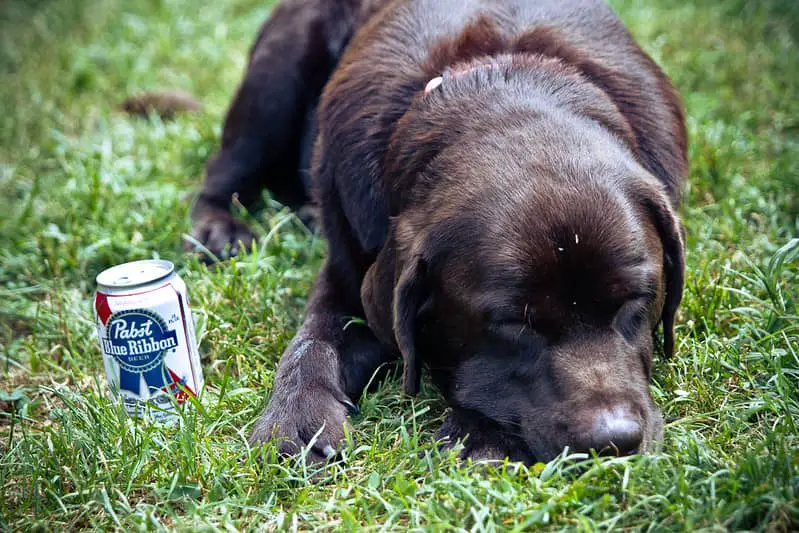
You have a favorite rucking path you like to follow, but do you know how many ticks and fleas are in the area?
Both microscopic insect species are known disease carriers, especially ticks. Your four-legged friend can develop anaplasmosis or Lyme disease from ticks, and some of these diseases can spread to you as well.
If your pup isn’t already on a flea and tick medication, please ensure your vet prescribes them one. Check that they’re up to date on their vaccines as well, as some vaccinations can safeguard your dog from Lyme disease.
Even with that added protection, take precautions when outdoors with your dog. Avoid walking through or around areas with tall grass, including bushes, shrubs, and plants.
Spray an insect repellant that works on fleas and ticks. Give your pup a bath when you’re done rucking and then comb their fur, looking for fleas and ticks as you brush.
5. Ease Your Dog into It
When you first started rucking, you probably thought you could walk or run a mile. Yet a few blocks from your house, you were feeling winded, not to mention you had a painful stitch in your side.
Just like you had to acclimate to the rigors of rucking, your dog does as well. Expecting them to walk their usual route when they first start rucking is not fair. You want to halve your route and then halve it again to have a realistic idea of how far you’ll go those first few times.
As you get out and ruck your dog more often, their endurance will increase and they’ll be able to walk greater distances with you.
Patience is key here.
6. Use a High-Quality Leash
A well-built leash for rucking your dog is a must. We recommend Go Ruck’s leash. This six-foot leash is made of military-grade nylon webbing. The military-style clip is a nice touch too.
Pair it with a Dog Jacket To Keep them Warm
Norbi Pet Warm Jacket (link to Amazon) is another essential, especially when the weather gets colder and you still want to ruck your dog. This two-in-one dog outfit comes in sizes extra-small through XXL and includes a harness with metal clasps for attaching your new leash to.
7. Have First Aid Supplies Handy
You strive to take the best care of your dog. Part of that care is preparing for the worst. Add a first aid kit (link to Amazon) like this one from Unique Dog to your rucking pack. Inside this kit is everything your dog needs as well as plenty of useful extras you might not have thought to bring with you.
What do you get in the kit?
Open it up and you’ll find:
- Dual food storage containers for dog food
- Two stainless steel dog bowls,
- An elevated bowl stand
- Case tags
There’s room within the bag for adding bandages, medical scissors, bandage tape, gauze, and the like, but these items are not included.
The food containers measure 5 inches wide by 7 inches deep and 9 inches long. You can fit up to 20 cups of dog food per container. The bag itself is 23 liters, or 12 inches wide, 9 inches deep, and 15 inches long. Spacious enough for your dogs’ needs and small enough to easily carry along with you.
Dogs that weigh between 10 and 55 pounds will get the most use of the 7-inch dog stand. We love how you can feed and hydrate your dog at a moment’s notice with the gear included in this kit.
Just don’t forget to bring some dog kibble on your rucking adventures!
8. Keep an Eye on Your Dog
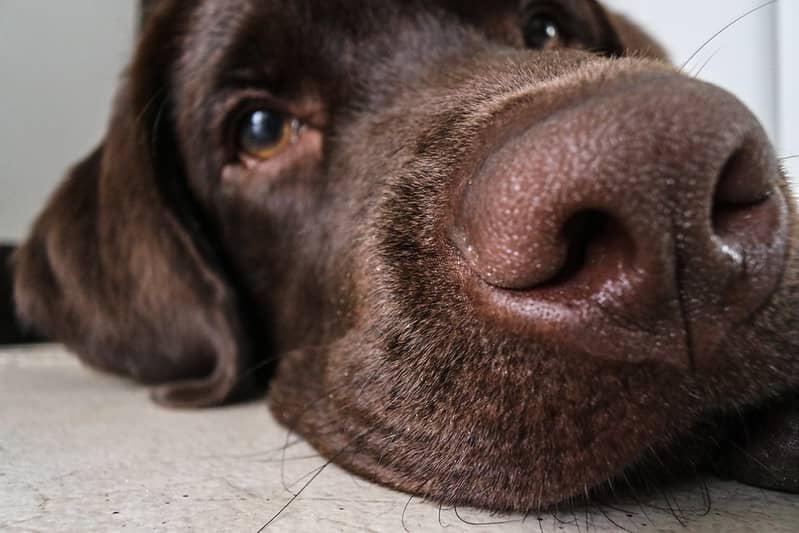
When you ruck by yourself, you can go wherever and do whatever you want within your own limitations. Now that your dog will be by your side, it’s time to reassess whether all parts of your rucking route are dog-appropriate.
You don’t want to leave your dog alone for long periods, as you can’t trust that they’ll be there when you get back. You also can’t rely on strangers to look after your dog. At the end of the day, it’s your dog, so they’re your responsibility.
It’s okay if you want your rucking day to be a totally selfish excursion. We all need time away from the stresses of life sometimes. On those days, just don’t bring your dog.
9. Use a Tracker to Avoid Losing Your Dog
The fun of exploring new places with your pup is that they get to take in new scents, fresh sights, and maybe even an animal they’ve never encountered.
In other words, your dog could try to take off running at just about any moment.
On a six-foot leash, they can get decently far, and if your dog is strong or crafty enough, they may be able to finagle their way out of their harness or jacket. Then your dog would be completely free and could get lost.
Fortunately, such a heartbreaking scenario is preventable with the Cube.
This smart tracker has many uses, from finding your dog to locating your wallet, keys, luggage, and even your household cat.
How does it work?
- Attach the Cube to your dog’s leash
- Download the Cube app to your phone
- The Cube device will ping the app to let you know where the device is.
It makes noise too. Once you find your Cube, you’ve found your dog.
Even if you lose your phone, Cube can help you recover that as well. You’ll get a lot of use out of the Cube at home as well as when rucking!
10. Prevent Overheating
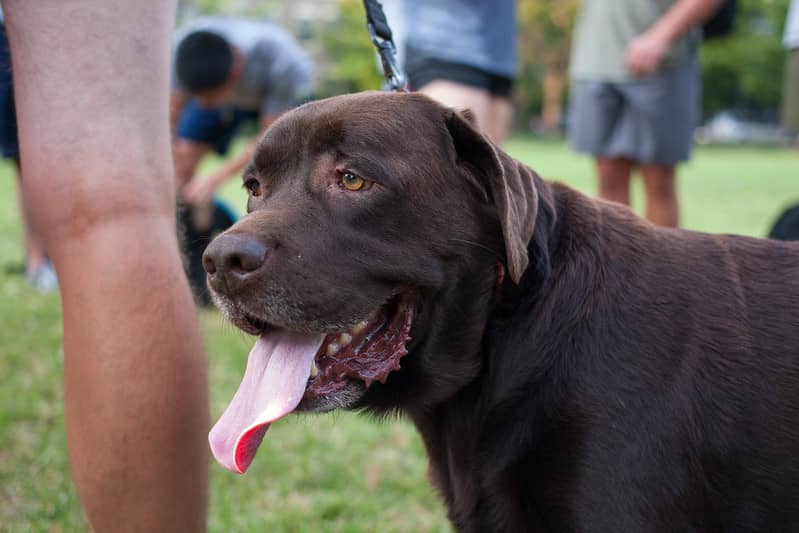
Dogs perspire, although their sweat comes out of their paw pad glands. When your dog is overheating, they’ll begin panting. Since dogs wear a fur coat all year long, what’s hot to them might not be hot to you. That’s even truer if your dog has a darker coat or they’re double-coated.
When rucking in warmer weather, try to plan your trip early in the morning or around sunset when the hottest time of day has already passed. If you must be out in the middle of the afternoon, avoid the sun as much as you can.
Stop when your dog begins slowing down and make them drink some water. If they’re not thirsty, then at the very least, you want to wait around until their panting eases. Then you can resume rucking.
Most importantly, never leave your dog in a hot car. Temperatures in the car can easily reach 116 to 200 degrees Fahrenheit, which can be deadly for dogs.
11. Bring a Dog Bed
If your dog needs a break during rucking, they don’t want to sit on the dirty, hard ground. You also don’t want them lounging in the grass in case there are ticks or fleas around.
A dog bed (link to Amazon) you can fit into your rucking bag will give your pup a safe, comfortable spot to rest their bones anytime until they’re ready to continue rucking with you.
Final Thoughts
Rucking your dog can be a fulfilling experience for you both, but you must take the proper precautions. Avoid rucking in hot weather, get your dog a health checkup, and make sure they’re on anti-flea and tick medication. Bring lots of treats, water, and even a bed. Have fun!



